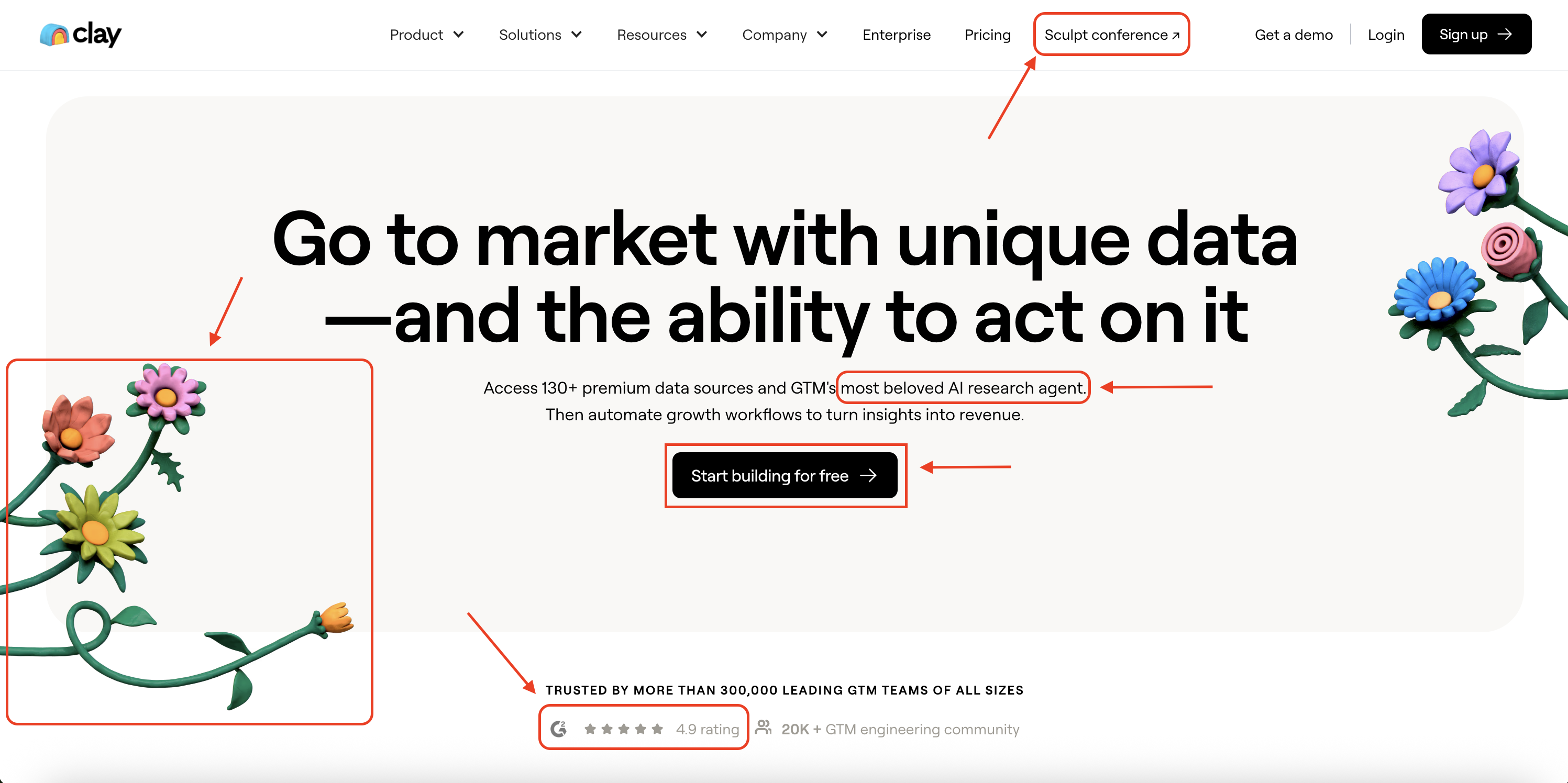
A Deep Dive Website Analysis of Clay
In this piece, I will do a deep dive website analysis of Clay, a B2B SaaS brand that has rapidly become a household name and seen meteoric growth.
I will use the DoWhatWork's database of tens of thousands of tests to guide my feedback on where Clay is showing best practices and where there is room for optimization.
For the sake of this post not being twenty pages, I will limit the analysis to the homepage.
HOMEPAGE
Off the bat, there is a lot to unpack above the fold.
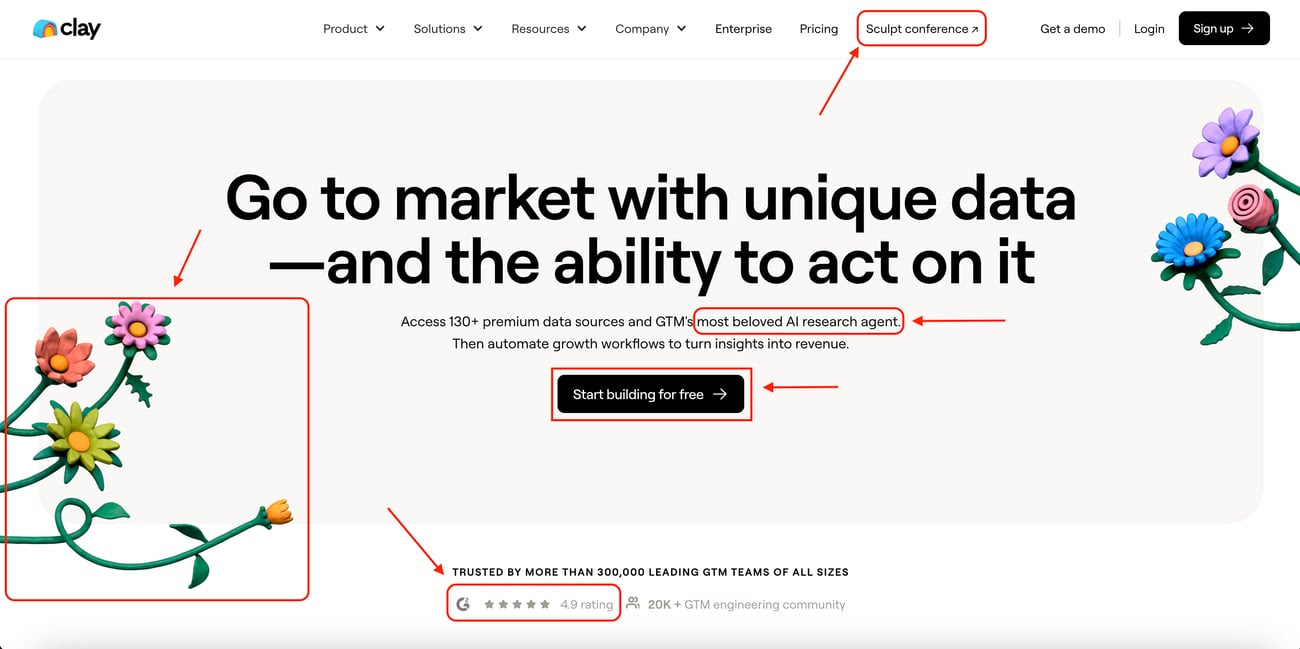
Clay links to their conference from the navigation, instead of as a banner. We have seen dozens of brands testing having banners on their homepages (for events, for demos, for webinars) and typically these tests lose. A primary reason is that they reduce clicks to other CTAs, more essential to the core buying journey. While I don't know if having it in the navigation is winning, the data points to having it as a banner being losing, so this is likely a positive conversion decision.
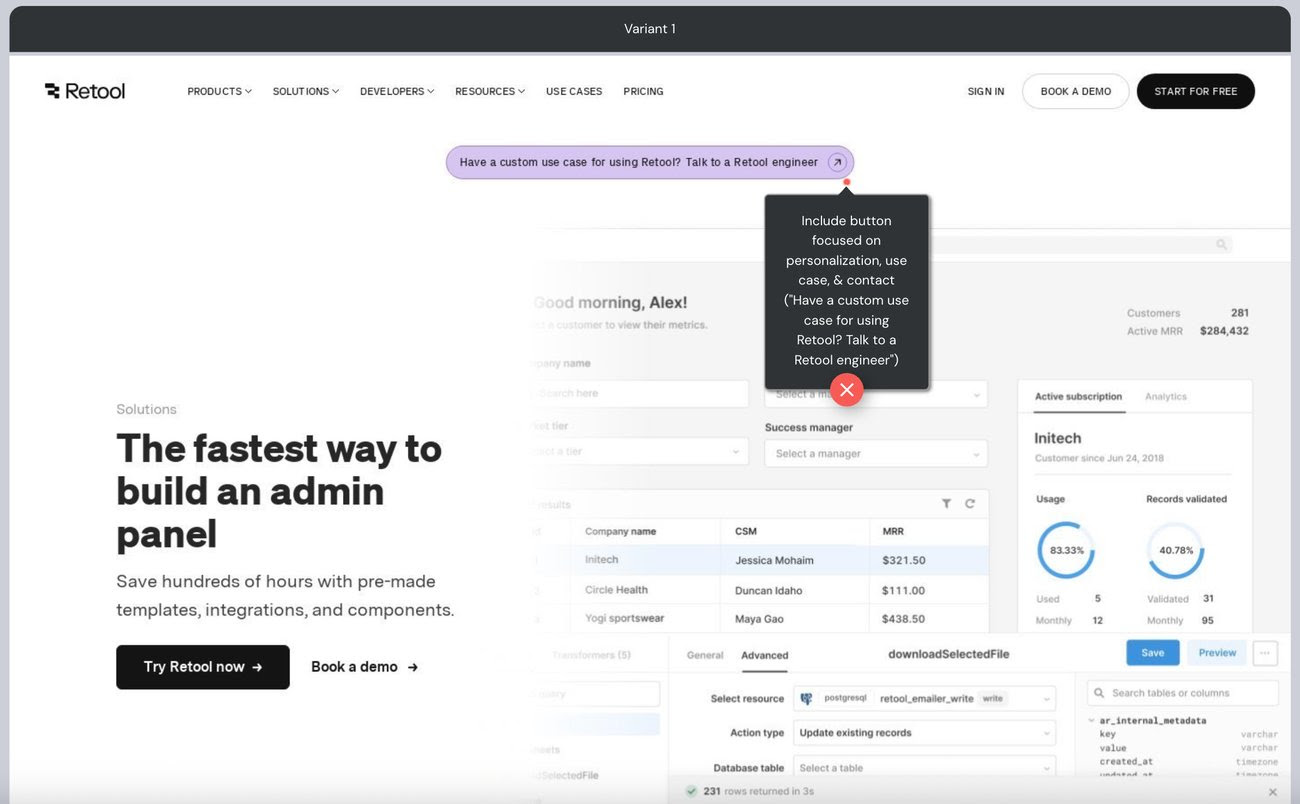
Branded background imagery typically performs poorly. It might seem generic, but there is a reason you see a high percentage of B2B SaaS and Fintech companies use product imagery versus stock photos, branded backgrounds or creative designs, and that is that product imagery wins in the majority of head-to-head split tests. Customers want a clear visual of what they are getting. To Clay's credit, they include lots of product imagery throughout the rest of the homepage, but not including it in the hero is likely a losing bet.
Arrow icons in CTAs typically lose. This is a small detail but nonetheless worthwhile noting. Plain text CTA's tend to beat out CTA's with a directional arrow. See below a test from The Economist on this exact thing.

Single CTA's in the hero typically lose. For brands where there traffic comes from multiple sources (say paid, influencers, social, events etc), they arrive at the site with varying levels of understanding of the product and intent. As a byproduct, it's typically ideal to have a pathway for high intent users (like a demo), as well as for lower intent users (product walkthrough, trial etc). Below you can see Slack tested this head-to-head and landed on two CTAs.
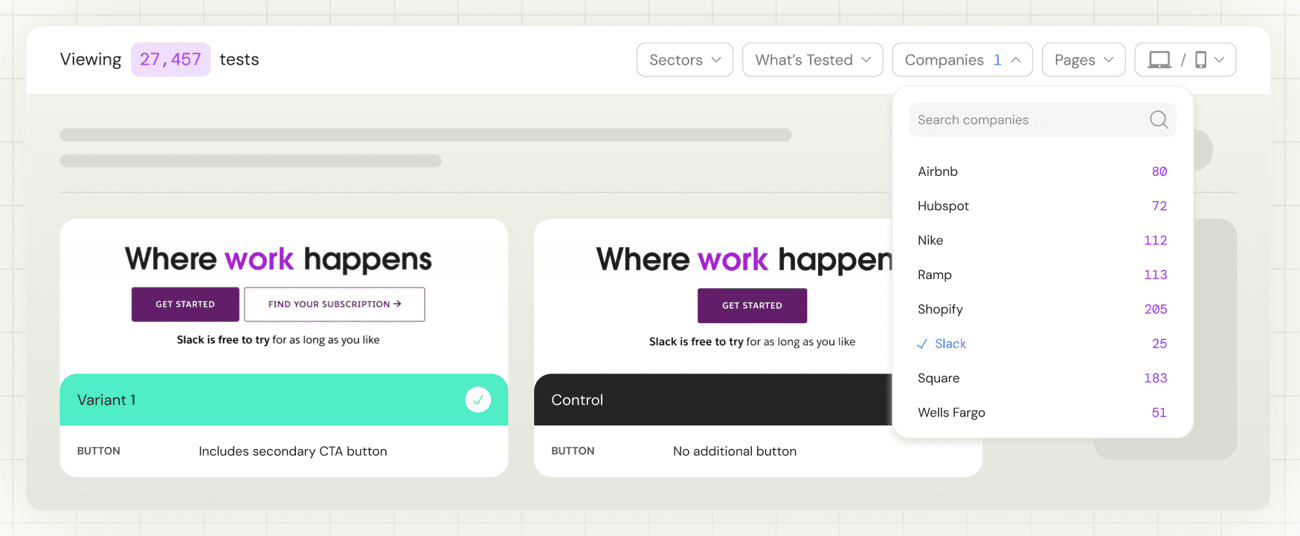
General AI positioning tends to lose. How brands talk about AI and how customers perceive it is continually changing. What we see typically win is AI verbiage that talks about the output, where general framing of "AI powered", "AI first" or "beloved XYZ agent" tends to lose when tested. Below is a good example of AI language specifically tied to the benefit from Zendesk, "AI agents available 24/7 to solve customer issues". That is what prospects care about, the output.

Linking out to G2 Reviews is likely a bad bet. While Clay has great reviews and overall rating from their customers, one hurdle with directing customers to this page is that G2 directly links to competitors and this might add additional competitive considerations that the prospect wasn't considering before. In many tests we have seen around adding G2 reviews in the hero, or on signup pages, or on pricing pages, they lose to the controls.

Moving on down the page, I love what Clay does with their logos bar. Typically logo bars perform poorly as they are static, with no ability to get context on if the logo's implementation was relevant to the prospect. But Clay adds case studies directly to a handful of their logos, adding context and depth. They even have nice hover animations to preview the customer stories.
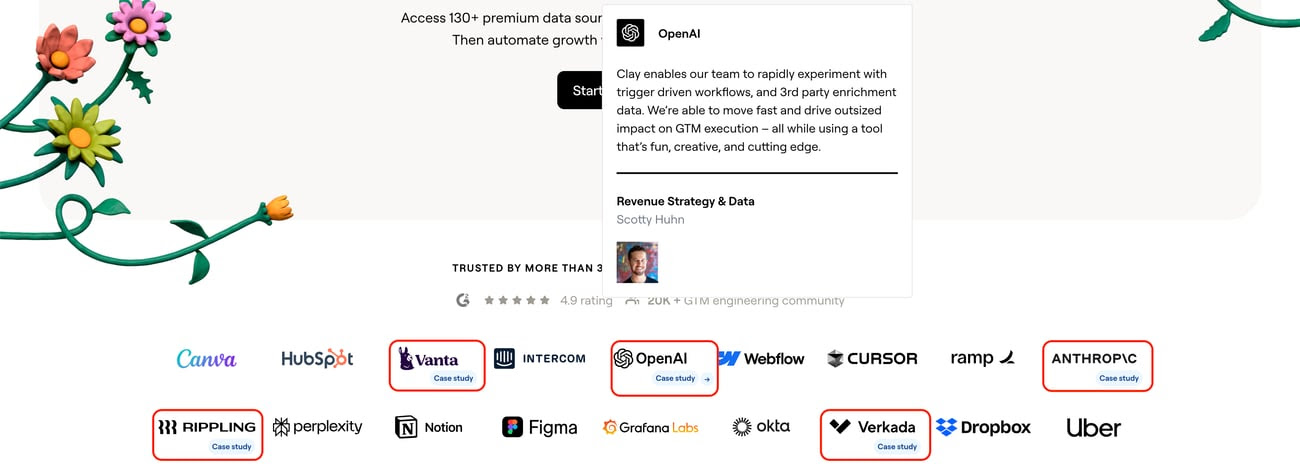
Continuing on down the page, after a few blocks explaining how Clay works and showing case studies (these are clear and well executed, showing GIFs and product shots), we land on this security section.
This is not only a typical element for targeting enterprise customers but also brings in Clay's consistent brand identity with the clay style imagery and color scheme. It's memorable and creates recall to Clay specifically.
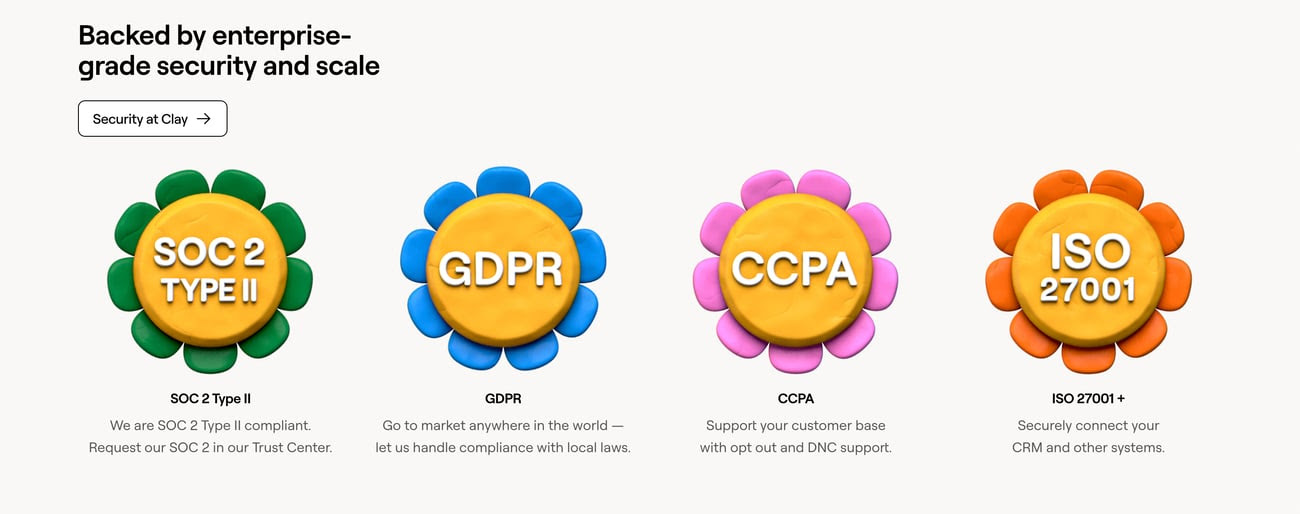
Below this we get to some generic testimonial blocks, which we typically see underperform. Instead, the testimonials I see winning in A/B testing are testimonials with specific before and after transitions, and those that create a lot of affinity with the buying persona. Here is a good example from Wynter's website.
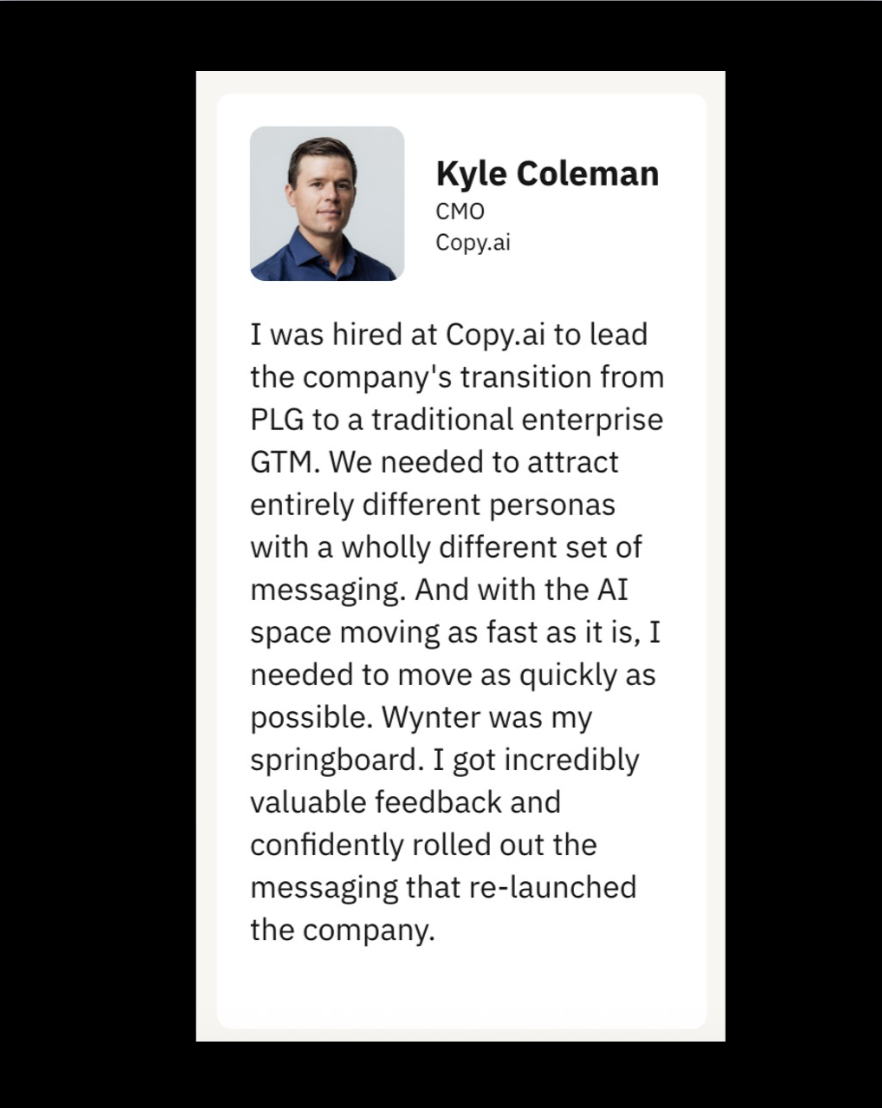
Clay ends the page with a nice branded background (again, while branded backgrounds tend to lose vs. product imagery in the hero, I think in other locations they are great for creating brand recall).
The other small detail which is best practice based on the data is the reassurance text next to the trial of "no credit card required". We have seen many brands from Shopify to Twilio display this copy on their sites.


